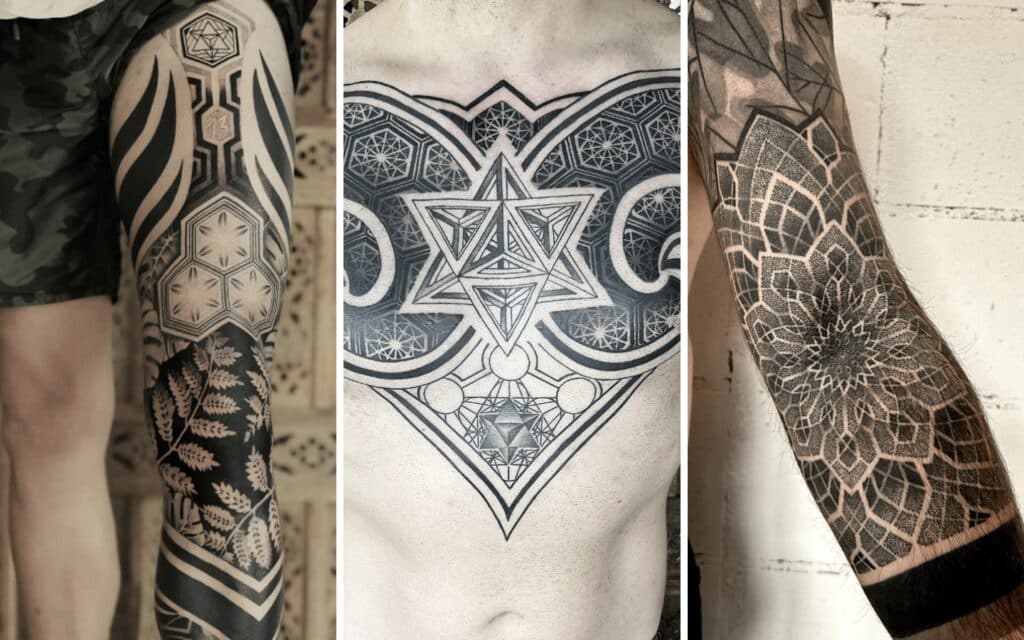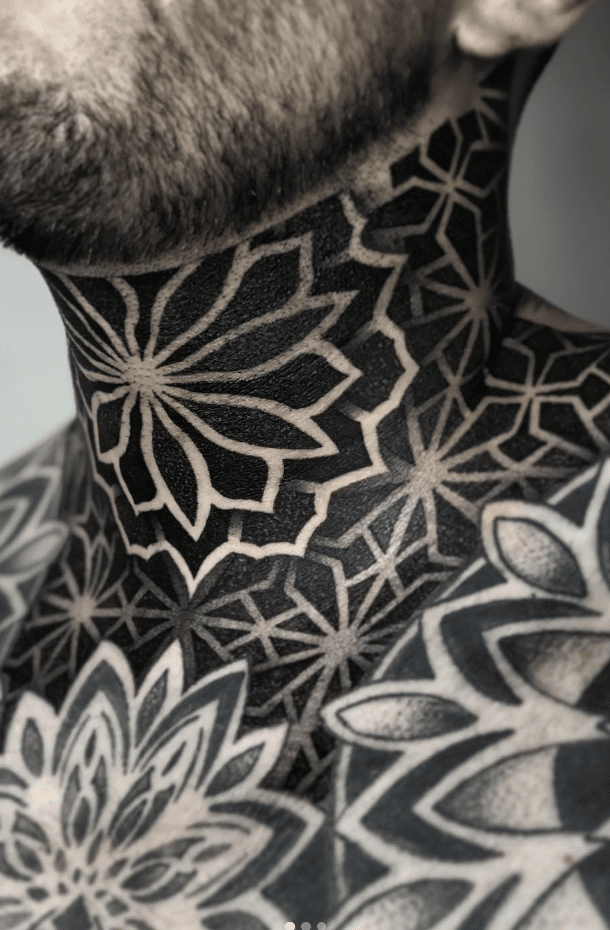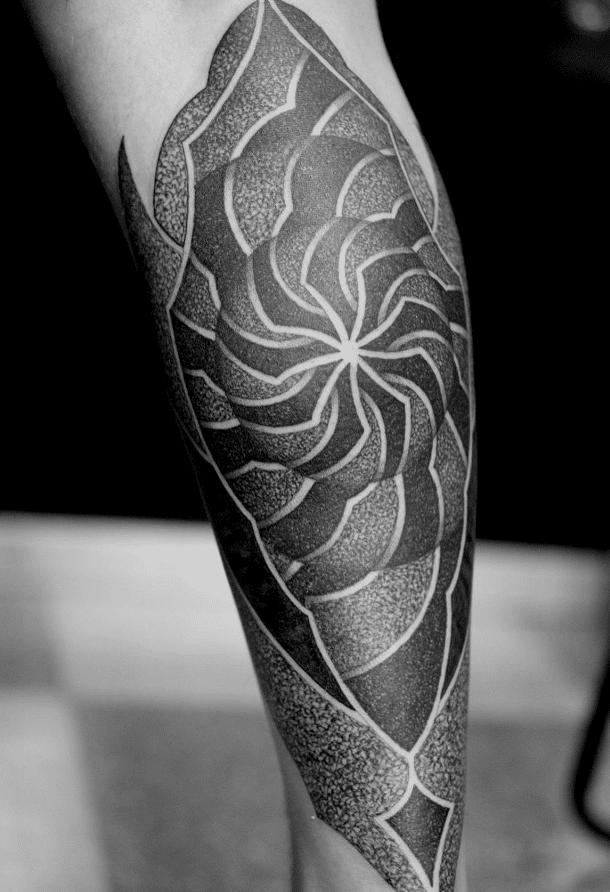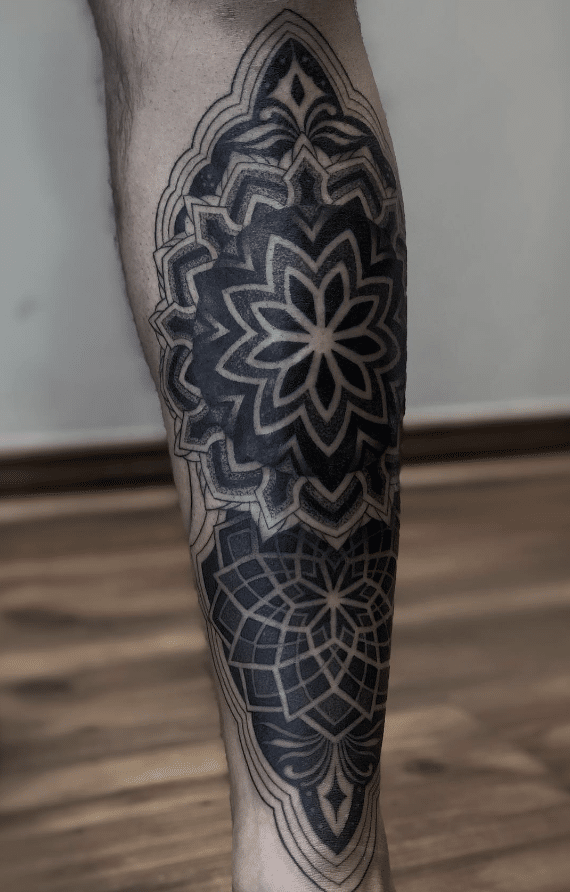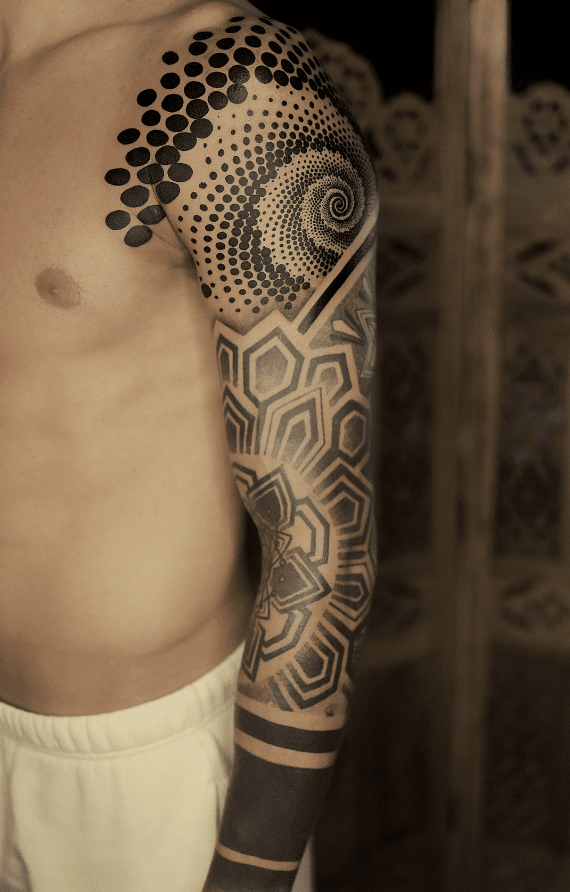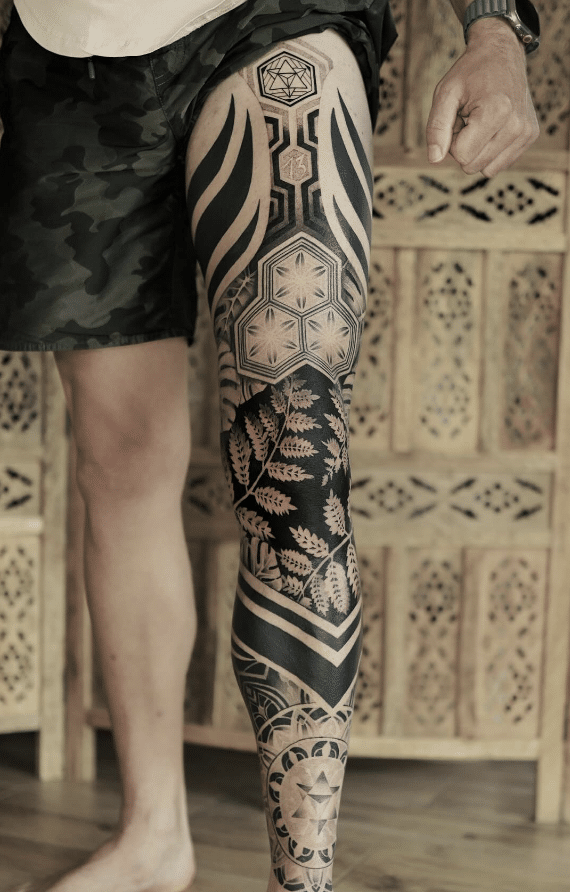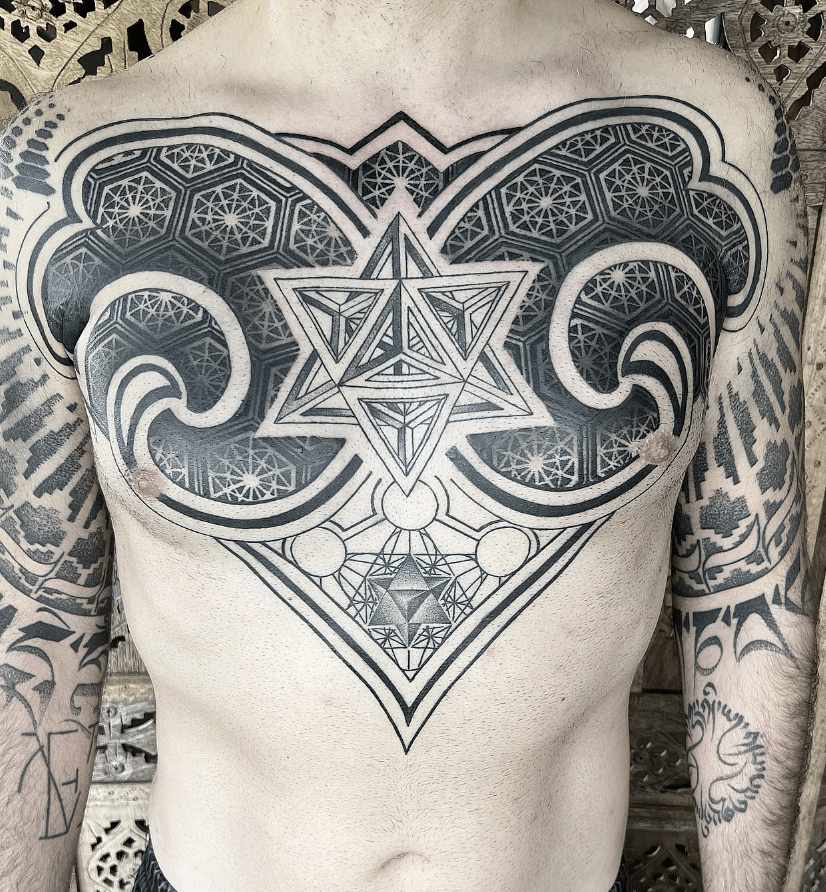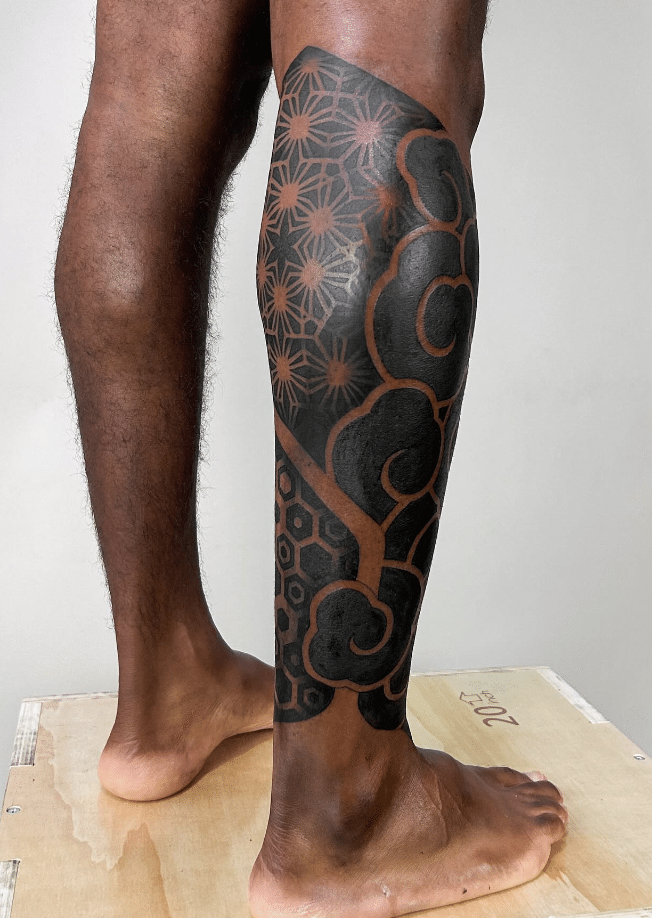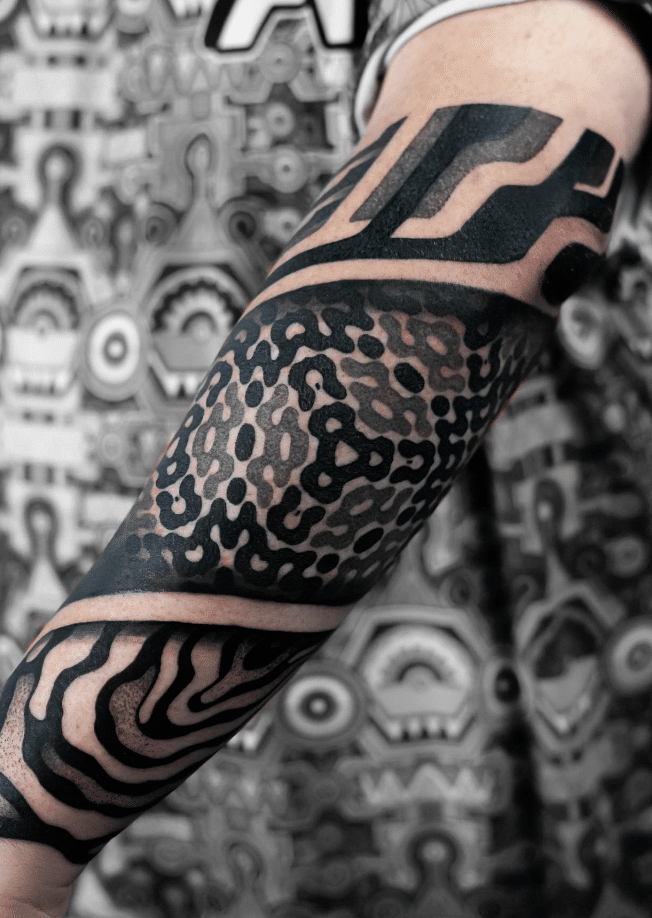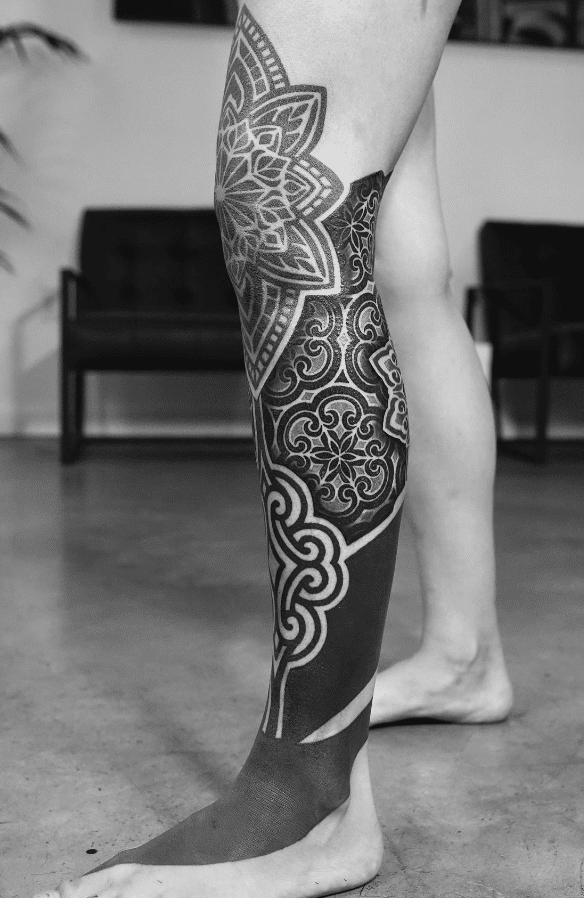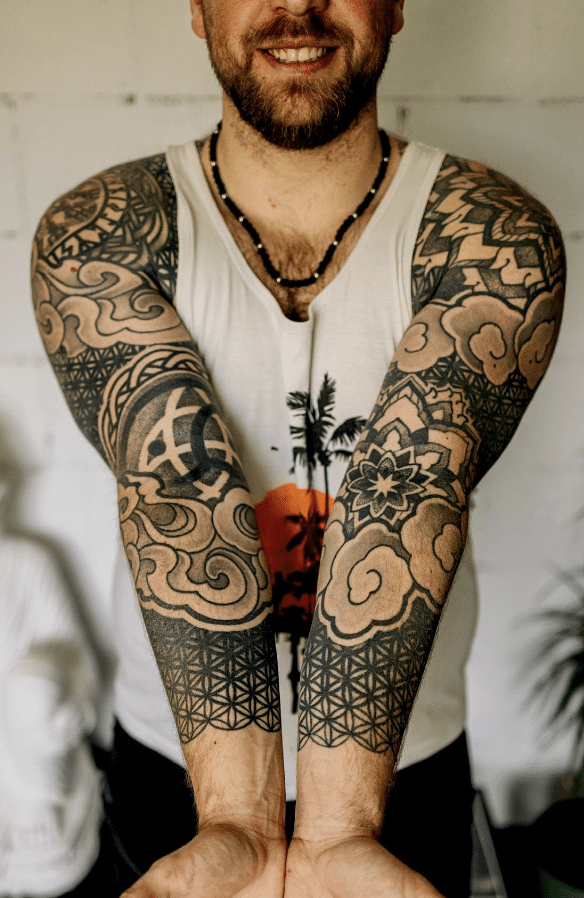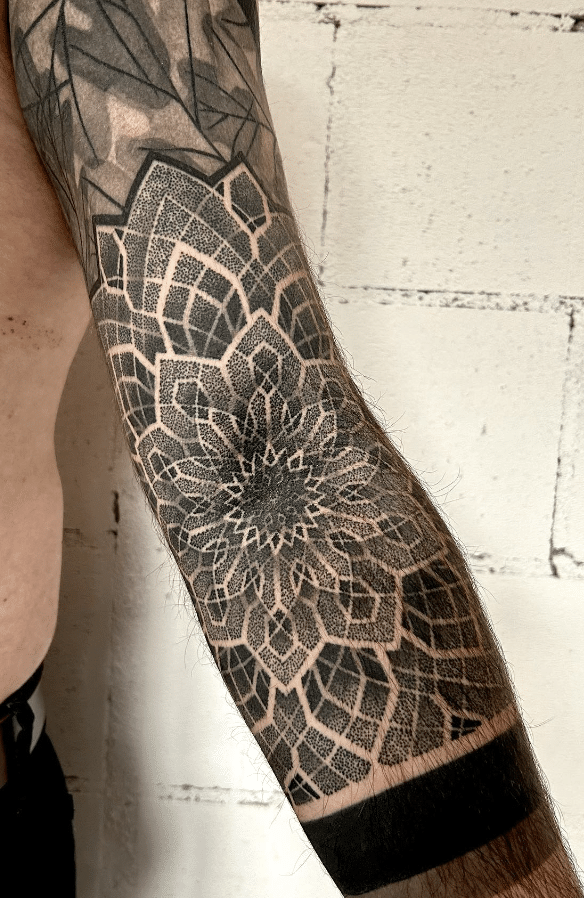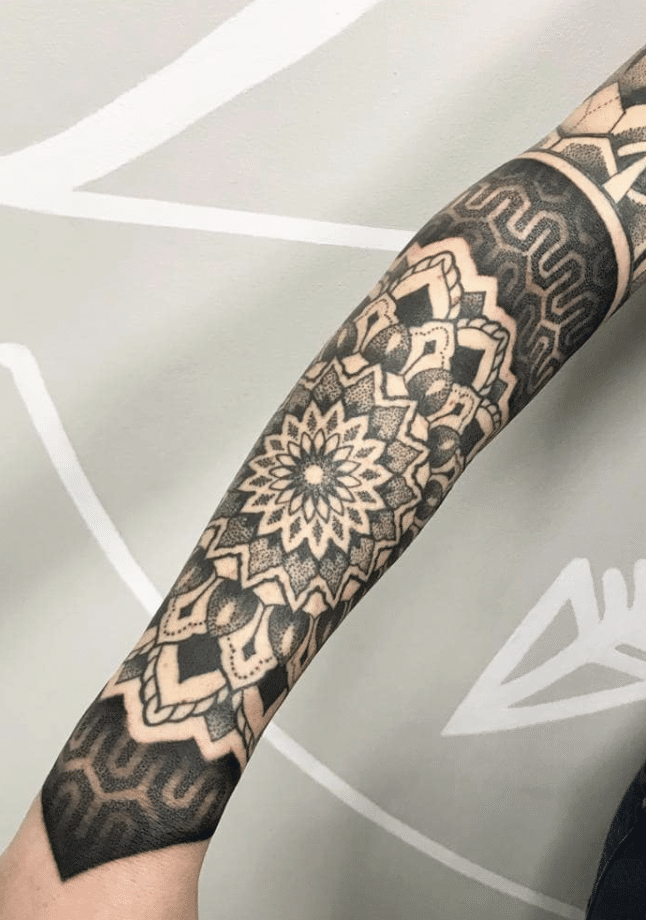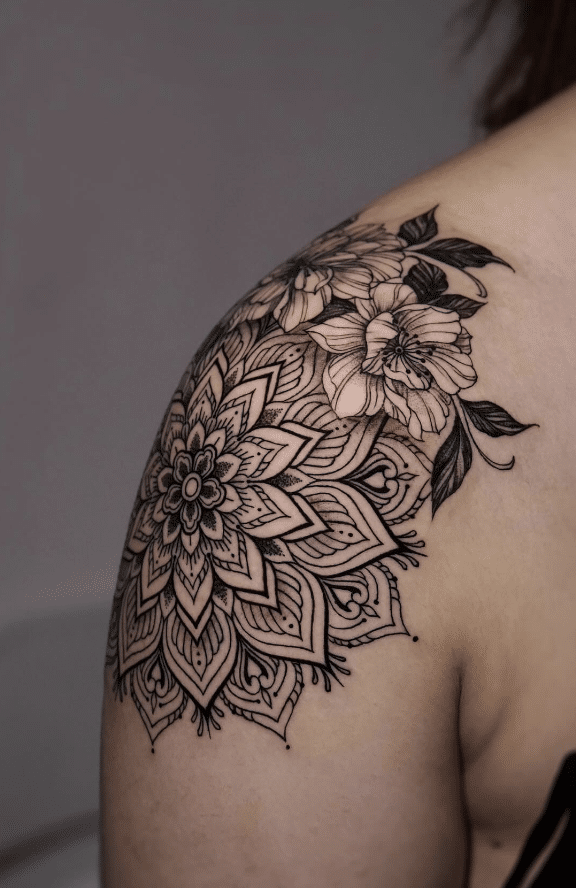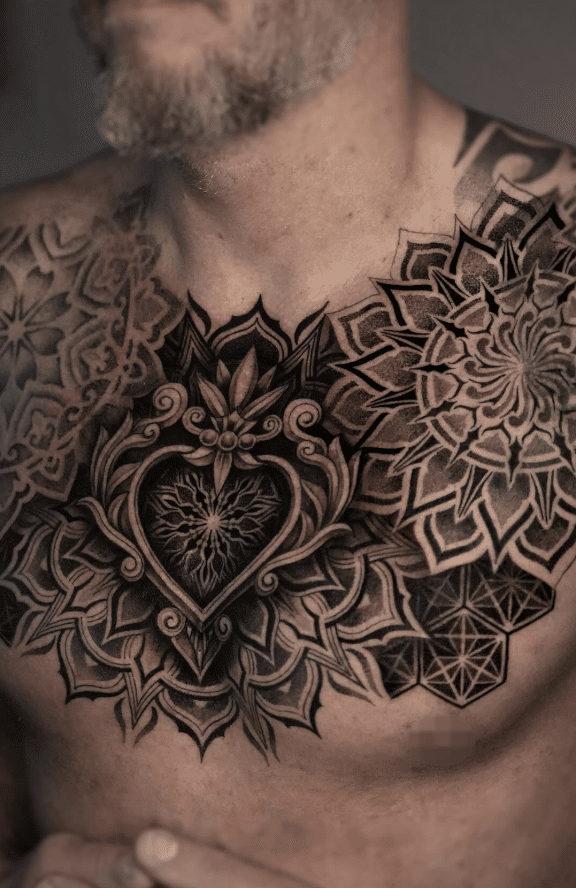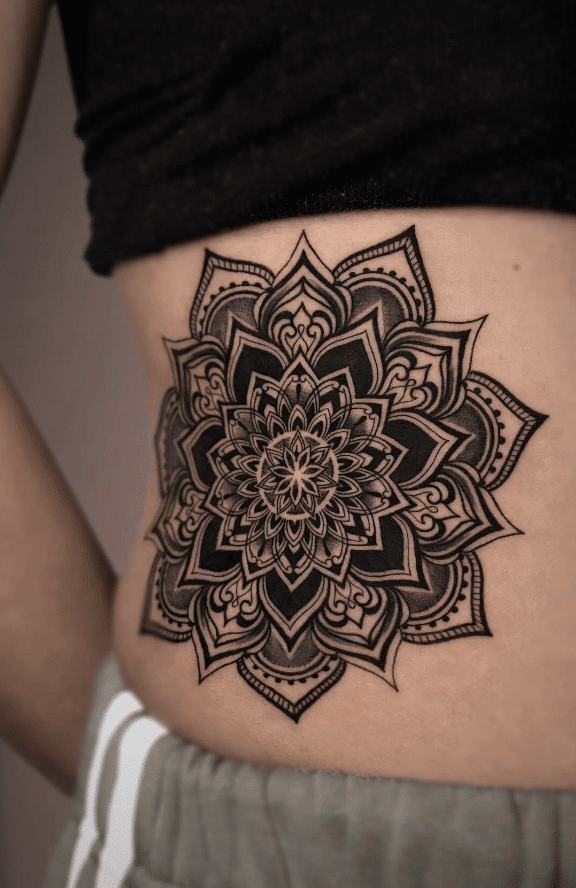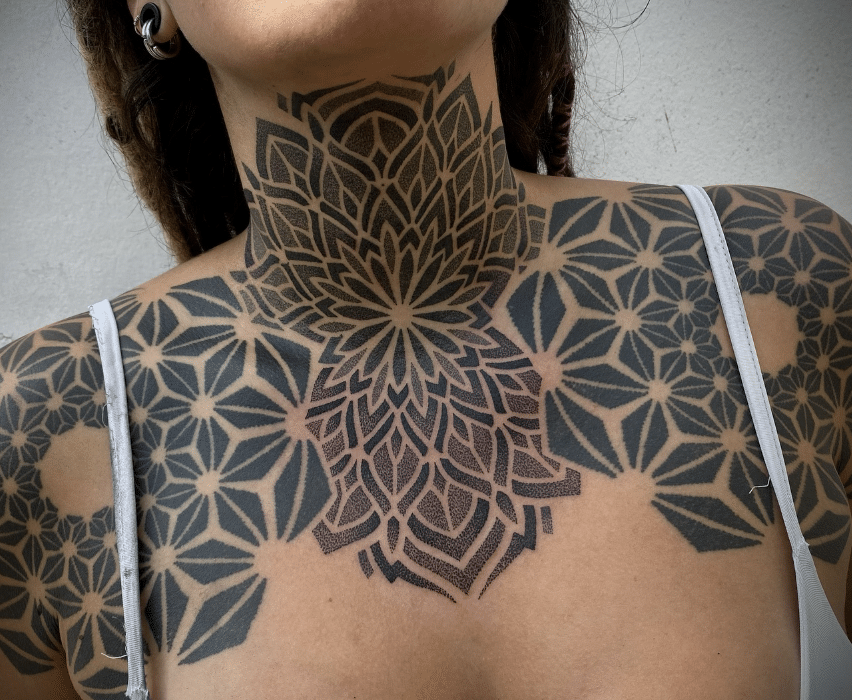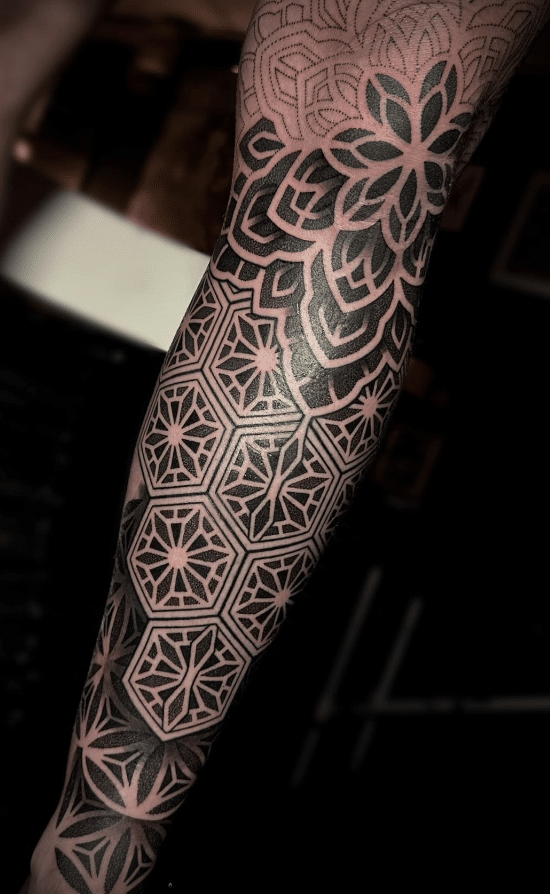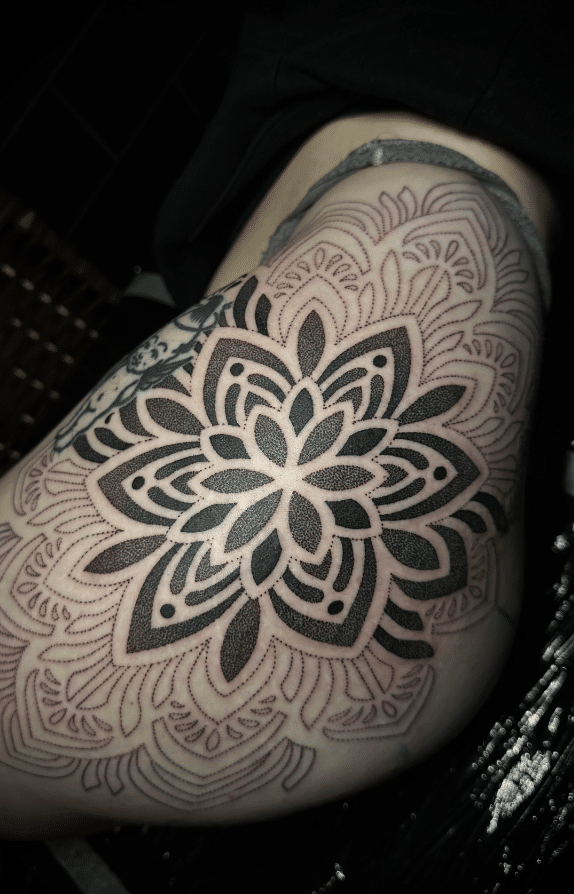Geometric Tattoos have a long history, with inspirations dating back to the ancient Egyptians, Greeks, Mayans, and Polynesia, and Mandala tattoos having their origins in Hinduism and Buddhism.
In the late 20th and early 21st centuries, geometric tattoos saw a resurgence in popularity, with modern tattoo artists experimenting with complex geometric designs, combining traditional patterns with contemporary styles.
History of Geometric Tattoos
Geometric tattoos can be traced back to ancient times when geometric patterns and shapes were associated with spiritual and religious significance.
Sacred geometry, which involves shapes like circles, triangles, and squares, is believed to represent the fundamental patterns of the universe.
Many ancient cultures used geometric patterns in their art and tattoos.
For example, the Maori of New Zealand, the Polynesians, and the Native Americans all incorporated geometric designs into their tattoo practices, often to signify tribal affiliation, social status, or spiritual beliefs.
Tatau Geometric Tattoo
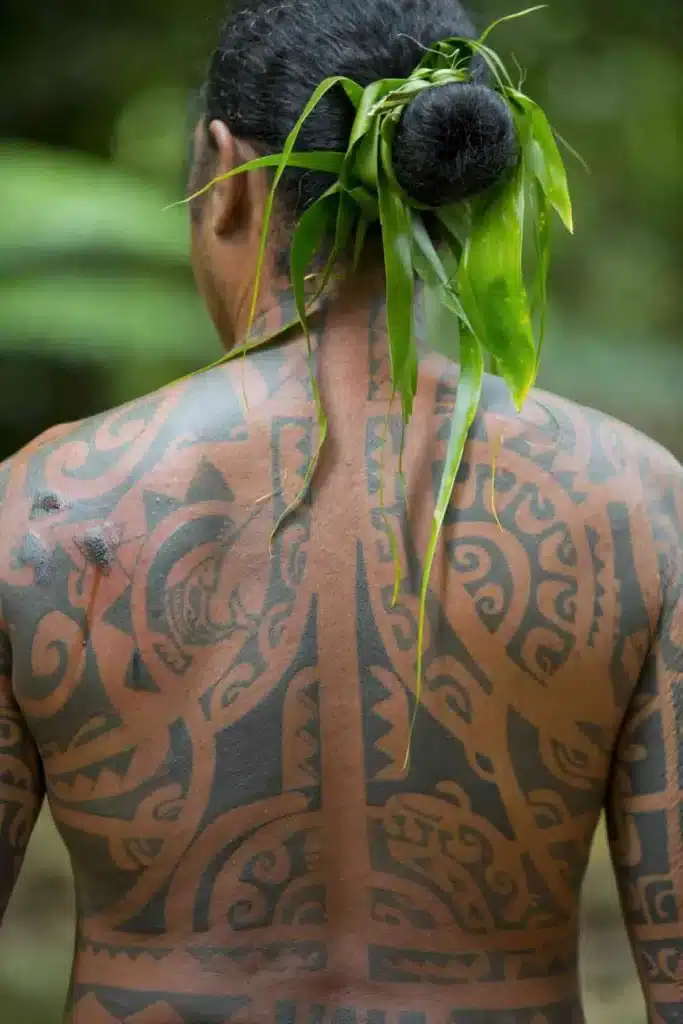
Photo credit: Tahiti Tourisme
Polynesian tribal tattoo art, known as tatau, consists almost solely of geometric patterns.
These designs often include shapes like triangles, lines, and circles, each with specific meanings related to protection, power, and ancestry.
Ta Moko Tattoo
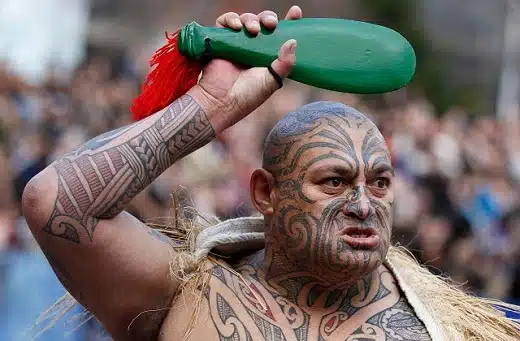
Photo credit: eportfoliomaori.wordpress.com
The Maori people of New Zealand also have had a long tradition of using intricate geometric patterns in their tattoos, known as Ta Moko.
These designs are highly symbolic, representing the individual's genealogy, status, and personal history.
Batok Geometric Tattoo
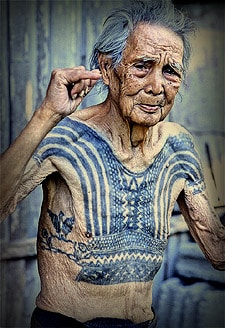
Photo credit: uwbodyadornment.pbworks.com
Before Spanish colonization, the Indigenous people of the Philippines, particularly the Visayans and the Cordillerans, practiced tattooing known as "batok" or "batek," which were common among warriors and symbolized bravery, accomplishments, and social status.
Native American Tattoo
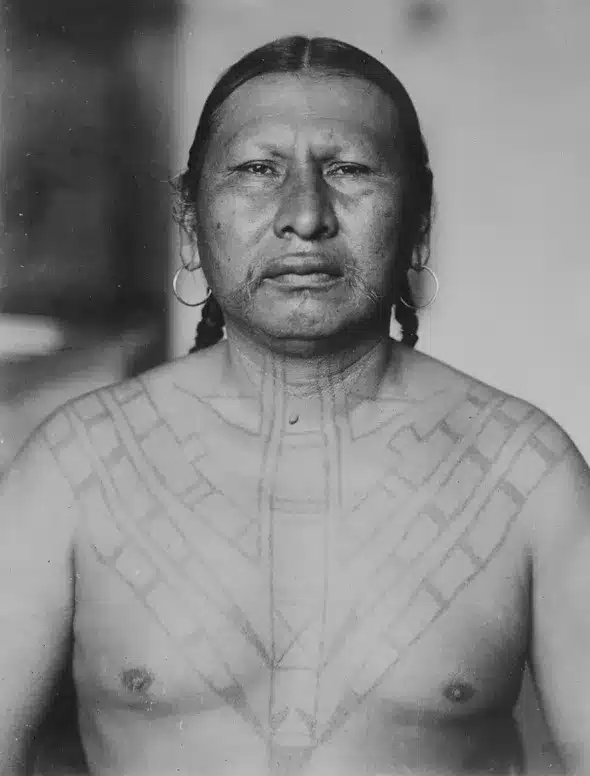
Photo credit: Abqari Engineering Academy
Various Native American tribes used geometric patterns in their tattooing practices.
These designs often included triangles, zigzags, and chevrons, symbolizing different aspects of their culture, such as nature, animals, and spiritual beliefs.
Celtic Tribe Tattoo
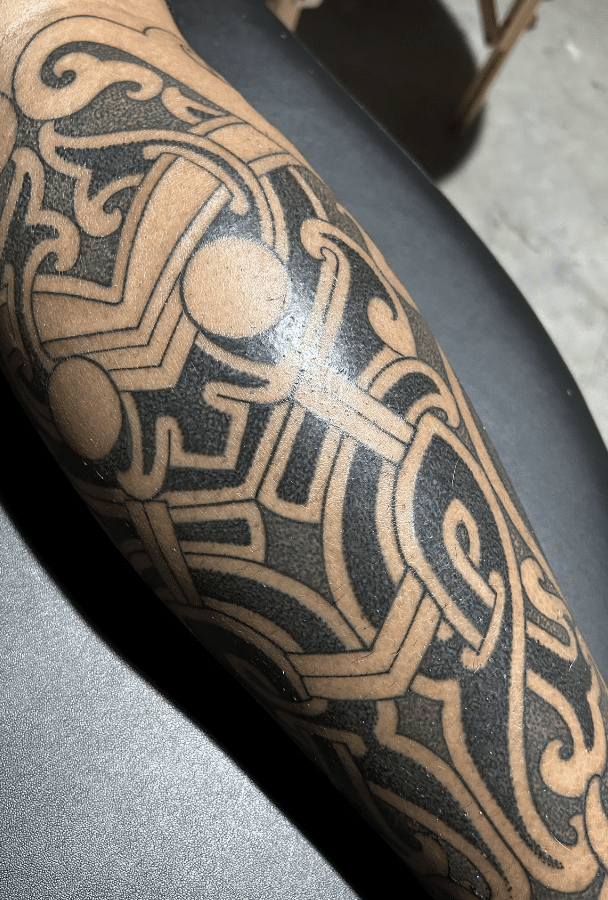
Photo credit: @celtictattooer
Celtic tribes from ancient Europe used knotwork and geometric patterns in their tattoos.
These intricate designs, often made up of interlacing lines and shapes, symbolized eternity, interconnectedness, and the cycles of life.
Dayak Tattoo
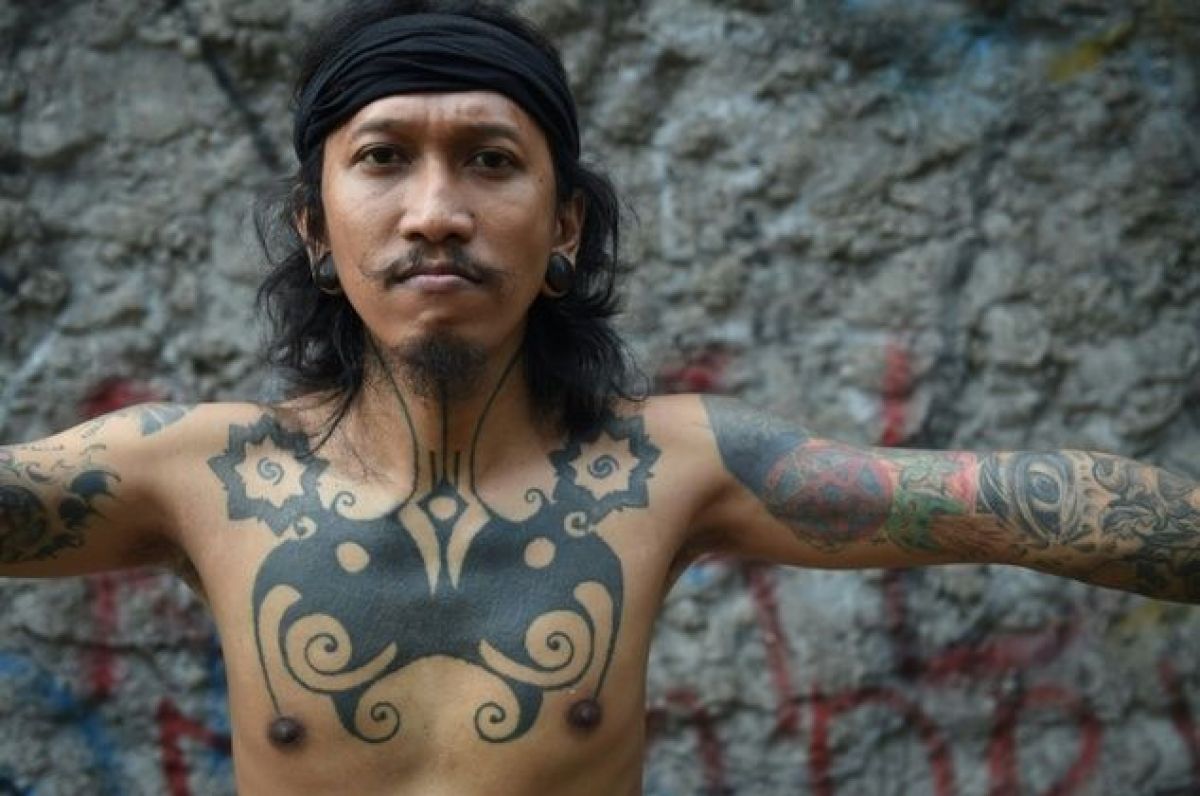
Photo credit: Brilio.net
The indigenous people of Borneo, particularly the Dayak tribes, often feature symmetrical patterns, such as rosettes, spirals, and angular motifs in their tattoos, which symbolize protection, strength, and connection to ancestors.
Inuit Geometric Tattoo
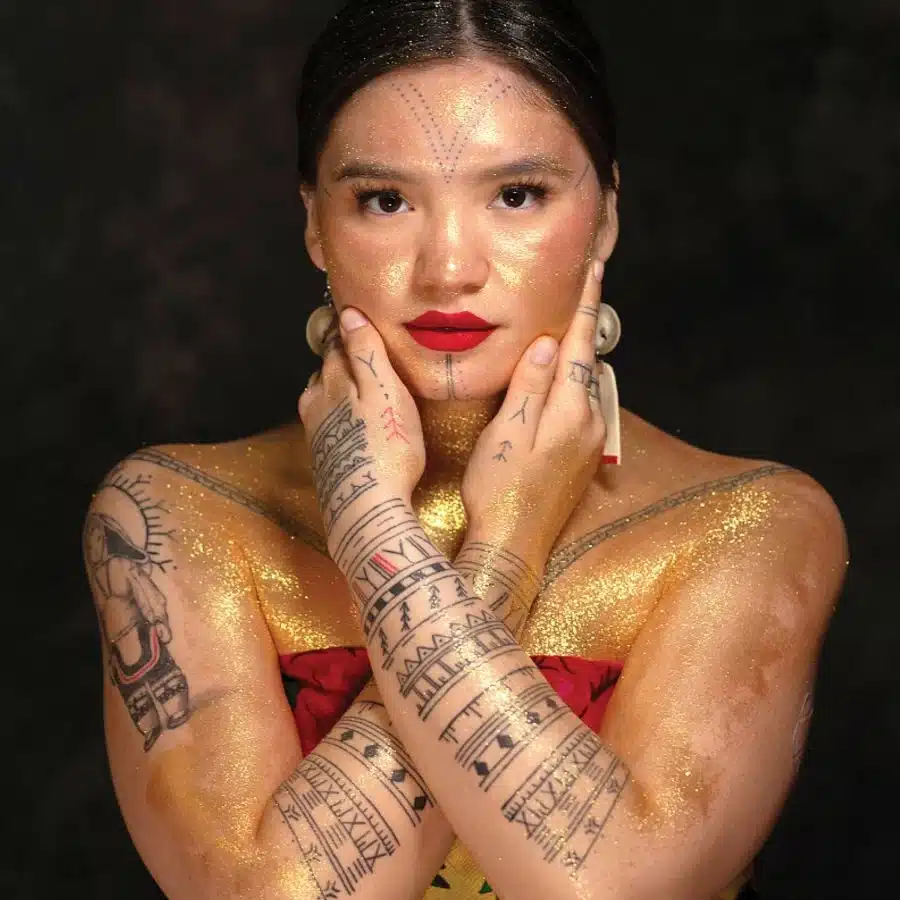
Photo credit: Chatelaine Magazine
The Inuit people of the Arctic region used geometric tattoos, particularly for women. These tattoos, made up of lines and dots on the face and body, were often linked to rites of passage, fertility, and spiritual beliefs.
Mandala Geometric Tattoos
"Mandala" comes from the ancient Indian language of Sanskrit, which means "circle." Mandalas are circular designs with intricate patterns that are often used in spiritual and ritualistic contexts.
Mandalas play a significant role in both Buddhism and Hinduism. In these traditions, mandalas are used as spiritual tools to aid meditation, representing the universe and the journey toward enlightenment.
They are meticulously created, often with sand, as a form of meditation and then destroyed to symbolize the impermanence of life.
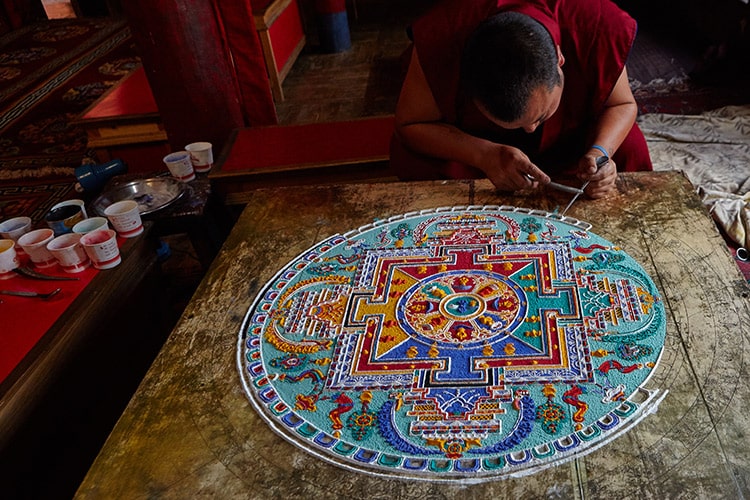
Photo credit: invaluable.com
A traditional mandala consists of a central point, surrounded by layers of geometric shapes, symbols, and patterns.
These elements represent the cosmos, wholeness, and unity, and each part of the mandala carries specific meanings, such as balance, harmony, and spiritual journey.
The circular shape of the mandala symbolizes infinity, unity, and completeness.
Mandala designs have become popular in tattoo art due to their intricate beauty and deep symbolism, and are often chosen for their aesthetic appeal as well as their spiritual connotations.
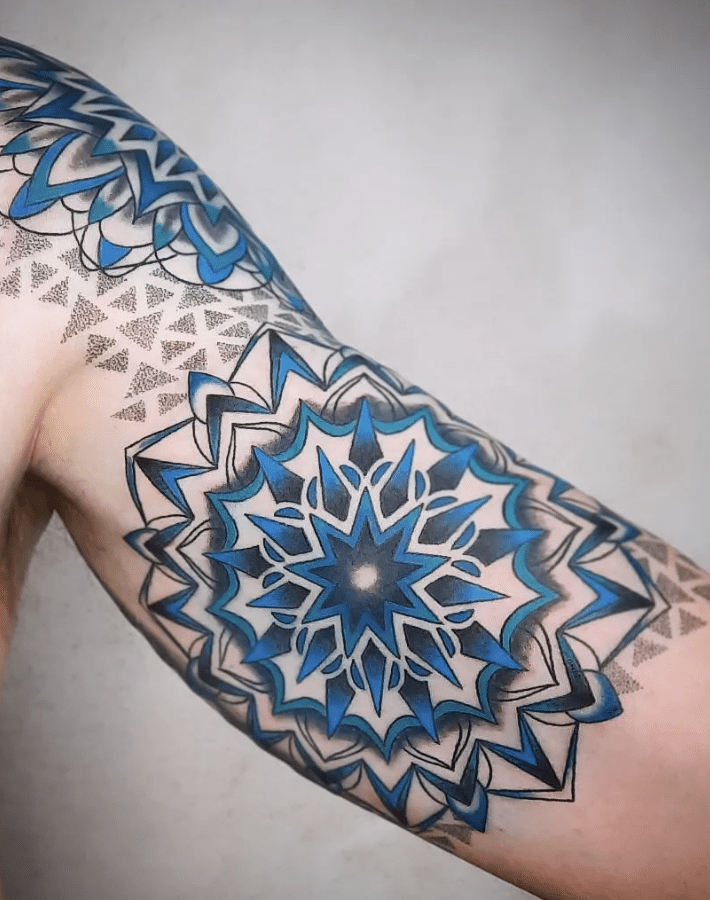
Photo credit: @poisonstudiosnz
Modern mandala tattoos often emphasize geometric precision, with artists creating detailed, symmetrical patterns that can cover various parts of the body.
Popular techniques for mandala tattoos include dotwork (link to new article) and linework, which involves creating the design with small dots or clean lines to achieve the intricate patterns typical of mandalas.
These designs are often combined with other elements, such as flowers, animals, or spiritual symbols, to create unique and personalized designs that reflect the wearer’s beliefs and experiences.
Amazing Geometric Tattoo Artists
Conclusion
Geometric tattoos, rooted in ancient traditions and spiritual practices, have evolved into a modern art form that resonates with many for their intricate beauty and deep symbolism.
From the sacred patterns of the Polynesians and Maori to the spiritual mandalas of Hinduism and Buddhism, these designs connect past and present, tradition and innovation.
Today, geometric tattoos continue to captivate with their precision, symmetry, and the rich personal meanings they convey, making them a timeless choice for body art enthusiasts.
- Trash Polka Tattoo Style - June 25, 2024
- Anime Tattoo Style - June 17, 2024
- Geometric Tattoo Style - June 16, 2024
